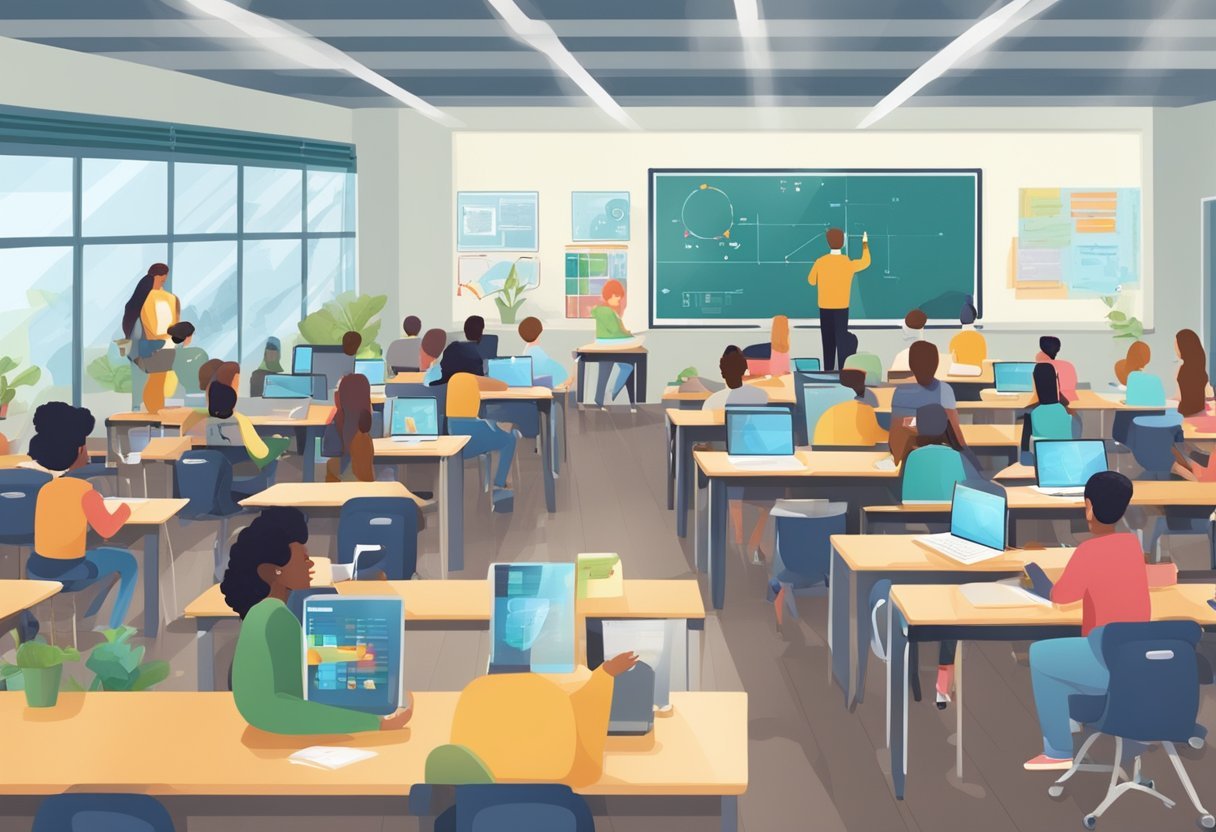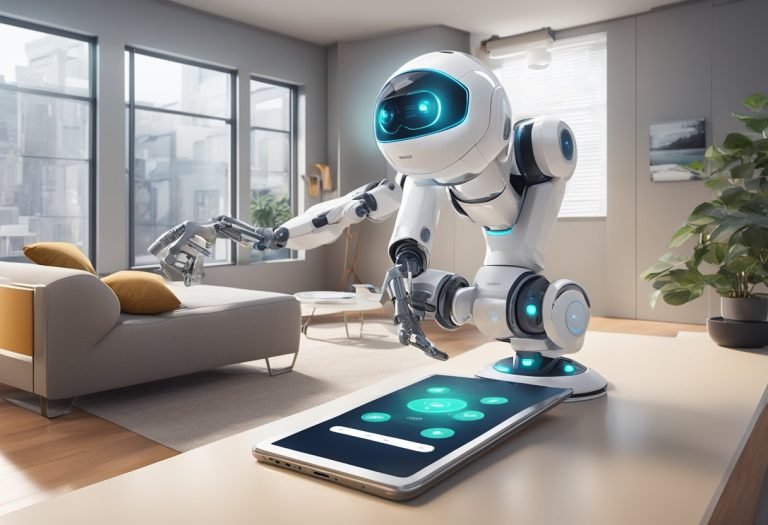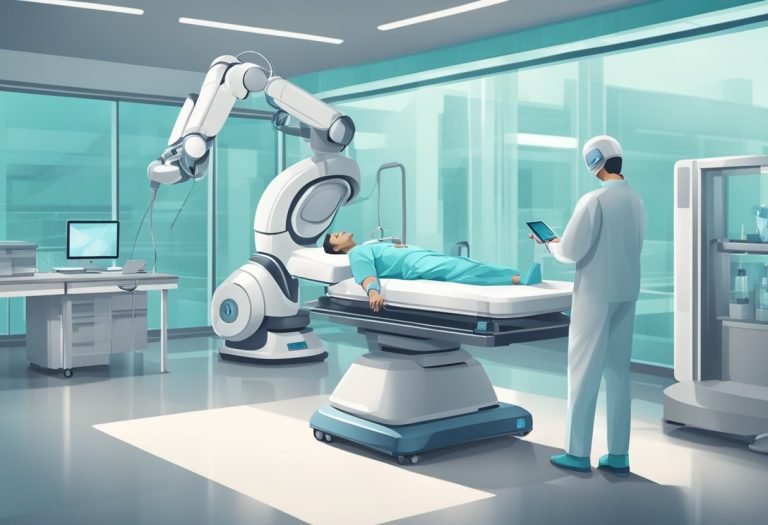Will AI Replace Teachers? Examining the Future of Education and Technology
The integration of artificial intelligence in education has sparked widespread debate about the future of teaching. Many educators and parents wonder if AI will eventually take over the classroom, replacing the vital role that teachers play in shaping young minds. The consensus among experts is that AI will not replace teachers but will serve as a powerful tool to enhance their effectiveness.

As technology continues to evolve, it is crucial to understand how AI can support educators rather than render them obsolete. AI can help in personalizing learning experiences, automating administrative tasks, and providing data-driven insights. Nevertheless, the human connection and adaptability that teachers offer are irreplaceable aspects of education that AI cannot replicate.
With advancements in AI, the educational landscape is poised for transformation, but the role of the teacher remains central. Embracing AI as a complement to traditional teaching methods could lead to more effective and engaging learning environments.
Key Takeaways
- AI will enhance, not replace, the role of teachers in education.
- Educators benefit from AI by streamlining tasks and personalizing learning.
- The unique human qualities of teachers remain essential in the classroom.
The Role of AI in Modern Education

AI plays a transformative role in today’s educational landscape. It enhances learning experiences through various applications.
Personalized Learning: AI can tailor lessons based on individual student needs. This approach helps address diverse learning styles and paces.
Automation of Administrative Tasks: Teachers can save time by using AI to handle routine tasks. This includes grading and attendance tracking, allowing more focus on teaching.
Data Analysis: AI provides insights into student performance. Educators can use this information to identify areas where students may need additional support.
Learning Tools: AI-powered tools like chatbots offer instant assistance. They help students with homework questions or provide resources outside classroom hours.
Collaborative Learning: By integrating AI into group projects, students can benefit from enhanced teamwork. AI tools can facilitate communication and resource sharing.
Supporting Educators: Rather than replacing teachers, AI aims to support them. It allows educators to concentrate on creativity, mentorship, and fostering critical thinking skills.
AI’s influence in education is significant and expected to grow. As technology evolves, its integration into the classroom will continue to reshape teaching and learning methods.
The combination of human skill and AI capabilities creates a richer educational environment for students. This synergy is poised to redefine how educators and learners interact in the future.
Potential of AI to Support Teachers

Artificial intelligence has the potential to significantly enhance the teaching experience by providing personalized learning, automating administrative tasks, and generating data-driven insights for instruction. These capabilities allow educators to focus more on teaching and less on time-consuming tasks.
Personalized Learning
AI can deliver tailored educational experiences that cater to individual student needs. By analyzing data from students’ interactions, AI systems can identify learning styles, preferences, and progress levels.
For instance, intelligent tutoring systems can adapt instructional content in real time, offering additional resources or exercises based on student performance. This adaptive learning technology ensures that each student receives the support necessary to master concepts, thereby fostering a more inclusive classroom environment.
Automation of Administrative Tasks
Automating repetitive administrative tasks is another way AI can support teachers. Tasks such as grading assignments, tracking attendance, and managing schedules can be streamlined through AI solutions.
This automation saves teachers valuable time, allowing them to dedicate their efforts to lesson planning and student interaction. Systems that use AI to grade assessments can provide immediate feedback to students, thus enhancing the learning process and enabling teachers to monitor progress efficiently.
Data-Driven Insights for Instruction
AI enables the collection and analysis of large datasets to inform instructional strategies. Educators can access insights regarding student engagement, comprehension levels, and areas needing improvement.
For example, AI tools can highlight trends in student performance over time, helping teachers adjust their lessons accordingly. By having access to these insights, educators can better understand their students’ needs and implement targeted interventions, ultimately leading to improved academic outcomes.
Through these applications, AI stands to not only support teachers but also transform the educational landscape by promoting effectiveness and efficiency in the classroom.
Challenges and Limitations of AI in Teaching

AI presents numerous challenges and limitations that must be addressed in the context of teaching. While it has the potential to enhance educational experiences, certain technological, ethical, and social factors impede its effectiveness in replacing human educators.
Technological and Ethical Concerns
The integration of AI in education raises significant technological concerns. Potential issues include data privacy and security, as AI systems often require access to sensitive student information. Schools must ensure that data is protected from breaches or misuse.
Ethically, there is concern about bias in AI algorithms. If the underlying data reflects societal biases, AI could perpetuate inequality in educational outcomes. Establishing clear ethical guidelines for AI use in education is crucial to mitigate these risks.
AI’s Lack of Emotional Intelligence
AI lacks the emotional intelligence that human teachers possess. Effective teaching involves understanding students’ emotional and psychological needs, which AI systems cannot fully replicate.
For instance, human educators can read body language and tone of voice, providing personalized support in a way that AI cannot. This emotional connection is vital for fostering a positive learning environment and facilitating student engagement. The inability of AI to build trust and rapport with students limits its effectiveness as a teaching tool.
The Digital Divide and Accessibility Issues
Access to AI-driven educational tools is not uniform across all demographics. The digital divide remains a pressing concern, as students in under-resourced areas may lack access to necessary technology.
This disparity can exacerbate existing inequalities in education, further marginalizing already disadvantaged groups. Additionally, reliance on AI can inadvertently alienate students who may struggle with technology, leading to disengagement. Ensuring equitable access to AI educational resources is essential to foster an inclusive learning environment.
AI as a Supplement, Not a Replacement

AI enhances educational practices by supporting teachers rather than replacing them. It plays a crucial role in promoting personalized learning, while the essence of effective teaching relies on human interaction and adaptability.
The Value of Human Interaction
Human interaction remains vital in education. Teachers excel at forming connections that foster trust and emotional intelligence in students. These qualities are essential for creating a positive learning environment.
AI lacks the ability to understand nuances of emotions and context in human relationships. While AI can provide information and resources, it cannot replicate the empathy and insight that teachers offer. The dynamic nature of classroom discussions relies on human facilitators who can adapt to students’ needs and motivations.
Blended Learning Models
Blended learning models are gaining traction as they integrate technology with traditional teaching methods. This approach allows for personalized educational experiences.
AI tools can support teachers by providing data-driven insights and automating administrative tasks. Educators can use these resources to focus more on interactive learning experiences.
For example, AI can analyze student performance and suggest targeted resources. This ensures that students receive the support they need while teachers retain their central role in guiding the learning process.
Teacher’s Evolving Role
The role of teachers continues to evolve in the context of AI integration. As AI tools become commonplace, educators are expected to adapt and enhance their teaching strategies.
Teachers are now required to become facilitators and mentors, guiding students in navigating AI resources. This shift emphasizes the importance of critical thinking and creativity.
Additionally, educators are tasked with integrating technology effectively into their curricula. They ensure that technology serves as a supportive tool rather than a detriment to learning. By embracing this evolving role, teachers can maximize the benefits of AI while maintaining the core values of education.
Case Studies of AI in Classrooms
Several schools have begun integrating AI technologies to enhance the learning experience.
Harris Federation, UK: This school network utilizes AI to support teacher efforts, providing personalized learning experiences for students. The implementation has allowed for tailored educational strategies that address individual student needs.
Elementary Schools in the U.S.: A recent study indicated that AI tools helped improve student engagement. Data showed that classrooms using AI-based programs reported a 20% increase in participation during lessons.
University Programs: Institutions are exploring generative AI to complement teaching. In these settings, AI assists in grading and providing material recommendations, enabling educators to focus more on instruction and student interaction.
Special Education: AI is also making strides in special needs education. Tools that adapt content based on student responses offer crucial support, allowing educators to customize lessons for students with diverse learning difficulties.
Through these examples, it’s evident that AI does not aim to replace educators but rather serve as a valuable asset in modern classrooms. The blending of technology and teaching is shaping new educational paradigms.
Future Trends in AI and Education
The integration of AI in education is expected to grow significantly. The global market for AI in education is projected to expand from $5.18 billion in 2024 to $112.3 billion by 2034. This rapid growth indicates increasing reliance on AI technologies.
Key trends in AI and education include:
- Personalized Learning: AI can analyze students’ learning styles and adapt materials accordingly.
- Administrative Efficiency: Automation of administrative tasks will allow educators to focus more on teaching.
- Enhanced Educational Tools: AI-driven platforms can provide real-time feedback and interactive learning experiences.
Collaboration Between Humans and AI is essential. AI will not replace teachers but act as a support tool, enhancing their capabilities. This partnership benefits both educators and students.
Concerns and Considerations are notable. Many parents and educators express worry over potential risks associated with AI in classrooms. It’s vital for teachers to remain central in discussions about integrating AI effectively.
As technology advances, the classroom setting will likely evolve. Educators will increasingly utilize AI to enrich the learning environment while maintaining a strong human connection. This balance will ensure that educational practices meet the diverse needs of all learners.
Conclusion
The role of teachers in education remains essential. AI will not replace them but will serve as a valuable tool to enhance their effectiveness.
Teachers provide unique qualities that AI cannot replicate. These include empathy, creativity, and mentorship. Students thrive on the human connections formed in the classroom.
AI can assist in various ways:
- Automating routine tasks such as grading and attendance.
- Personalizing learning experiences tailored to individual student needs.
- Providing data-driven insights to improve teaching strategies.
Despite its benefits, AI lacks the emotional support that teachers offer. This human connection is vital for student motivation and engagement.
Moving forward, collaboration between educators and AI will shape the future of education. Teachers must remain at the center of discussions about integrating AI into the classroom.
Educational leaders agree that embracing technology while preserving the human touch is key. By using AI to complement their skills, teachers can focus on fostering a supportive learning environment.
In summary, AI will enhance the educational landscape, but the heart of teaching will always lie in the hands of dedicated educators.







